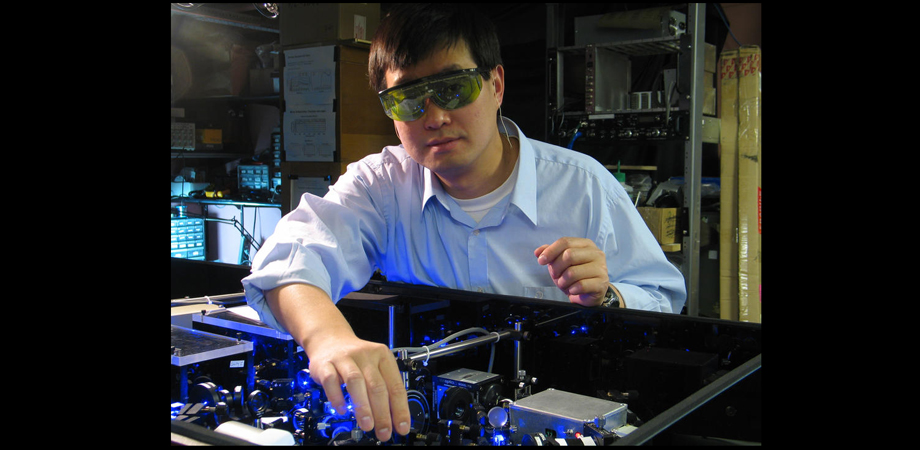Exploring the frontier of light-matter interactions

“It's a super exciting field, and its discovery potential and impact will remain strong for years to come,” says Jun Ye, leader of the Ye Group at JILA, a joint institute of the University of Colorado Boulder (CU Boulder) and the National Institute of Standards & Technology (NIST). The “super exciting” field he’s referencing is quantum science and metrology. Ye will be discussing recent developments in the field, including precise engineering of quantum states of matter and innovative laser technology, at SPIE Optics + Photonics 2022.
What are some of your responsibilities as head of the Ye Group at JILA?
The biggest responsibility is the well-being of our group members, the students, and postdocs. We try our best to create a safe and collegial environment, where we pursue new frontiers of science and technology. The lab culture is built around scientific creativity, rigor, openness, and technical competence, all with strong mutual support.
Your research group explores the frontiers of light-matter interactions. What are some of your lab’s projects in this area that you’re most excited about?
We build optical atomic clocks based on confining ultracold atoms or atomic quantum gas in optical lattices. These modern atomic clocks combine precision measurement and quantum science in a single platform, and they are pushing the frontiers of measurement science and quantum metrology.
We also study molecules in the quantum regime, where the quantum mechanical wavefunctions of individual molecules overlap with each other, creating novel dynamics mediated by molecular interactions. Cooling molecules to quantum degeneracy, just as the scientific community achieved on atoms in the late 90s, has provided a vast array of new opportunities for manipulating more complex matter, shedding new insights to emergent quantum phenomena, precision measurement that touches on fundamental physics and new quantum chemistry.
Our group also continues to develop some of the world's most frequency-stable lasers and their connections to optical frequency combs. We have expanded the spectral coverage of frequency combs to both XUV and mid infrared for novel scientific applications, including the search for a nuclear transition and for detection of COVID-19 infections via comb-based breath analysis.
What led to your interest in atomic clocks?
My mentor, Dr. Jan Hall of JILA, had a big part in this. I have always been very interested in precision measurement, but at the turn of this century, when we were seeing all the new developments such as optical frequency combs, laser cooling and trapping of atoms, atomic quantum gases, optical lattice traps, etc., I really felt that we had a golden opportunity to do something new. The dream was to have many atoms work together, all in their desired, pristine quantum states, and harness the power of stable lasers to communicate with these atoms to reach a limit set only by quantum mechanics.
You were awarded the 2022 Breakthrough Prize in Fundamental Physics for your pioneering research on atomic clocks. The NIST article states “Optical clocks are so named because they operate at optical frequencies, which are much higher and therefore enable more precise timekeeping than the microwave frequencies in today’s timekeeping standards.” How does this “more precise timekeeping” affect research in quantum science?
Precision allows us to see minute details emerging from new quantum systems, allowing us to understand the microscopic nature of the interaction between quantum particles, which then in turn allow us to build these new understandings into the next generation systems for even better performance (precision). This cycle of precision – quantum has been tremendously powerful.
How is innovative laser technology revolutionizing the performance of atomic clocks and metrology?
As I mentioned above, new laser technologies have been tremendously important. We need lasers with unprecedentedly long coherence times to "talk to" atoms prepared in pristine quantum states. We need optical frequency combs (a unification of ultrafast and continuous-wave lasers) to transfer optical phase to the microwave and vice versa. In the future, new development of integrated photonics can provide laser systems that support portable optical atomic clocks.
In an interview with New Scientist, you noted that “People have made atomic clocks for many decades.” What led to the movement from the “traditional” time measurement to working on atomic clocks?
Traditional atomic clocks use microwave fields to interact with atoms. In the new generation of atomic clocks, we use lasers to interact with atoms. Once we tame the laser, in terms of controlling its frequency and counting it accurately, then the much higher oscillation frequency associated with a laser is so much more attractive than the lower oscillation frequency associated with microwave/radio frequency technologies.
What do you see for the future of research with quantum science and metrology? What do you hope to see?
Quantum science includes a big ecosystem. I hope and trust that quantum science and metrology will bring — as they have already brought — many scientific and societal benefits to all humankind on this planet. Enhanced environmental sensing and monitoring, faster and more secure communications, and superior computing power are all interconnected deep down, coming from the same quantum science that we rely on to build better atomic clocks.
| Enjoy this article? Get similar news in your inbox |
|



